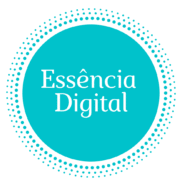Creating a digital product is a monumental achievement, but the work isn’t over when you export the final file. In many ways, it has just begun. A product without a strategic launch plan is like a beautifully written book with no distribution—its potential remains locked away, unseen and unsold.
A successful launch isn’t about “going viral” or hoping for a lucky break. It is a carefully orchestrated process of building anticipation, communicating value, and guiding your ideal customer toward a confident purchase. It’s the moment you transform your hard work into a commercially successful venture.
This guide provides a strategic playbook for launching and selling your digital product, turning your finished creation into a thriving asset for your business.
The Pre-Launch Runway: Warming Up Your Audience
The most successful product launches begin weeks, or even months, before the “buy” button ever goes live. A launch doesn’t just appear out of nowhere; it takes off from a long runway of anticipation, trust, and value that you’ve built with your audience beforehand. If you launch to a “cold” audience, you’ll be met with silence.
Here is a simple pre-launch content strategy to build momentum:
4-6 Weeks Before Launch: The “Problem” Phase
At this stage, do not mention your product. Your only goal is to talk about the problem that your product solves.
- Write blog posts, create videos, or post on social media about the challenges and pain points of your target audience.
- Share free, valuable tips and insights that help them with that problem.
- This positions you as a trusted authority and gets your audience thinking about the very problem your product is designed to fix.
1-2 Weeks Before Launch: The “Behind-the-Scenes” Phase
Now, you can start teasing that a solution is coming. Build curiosity and make your audience feel like insiders.
- Share sneak peeks of your creation process—a blurred screenshot, a photo of your workspace, or a short clip of a video module.
- Talk about the “why” behind your product. Share the story of what inspired you to create it.
- Announce an official launch date and start a “waitlist” to capture the email addresses of your most interested leads.
The Core Engine: Your Simple (But Powerful) Sales Funnel
A “sales funnel” is simply the journey you guide your customer on, from initial curiosity to a completed purchase. For your first launch, keep it simple and effective.
1. A High-Converting Sales Page
This is your 24/7 digital salesperson. It must be persuasive, clear, and focused on the customer’s transformation. A great sales page includes:
- A Compelling Headline: It should speak directly to the customer’s desired outcome.
- The “Before & After” Promise: Clearly describe the pain of their current situation and the ideal future state your product will help them achieve.
- Detailed Breakdown: Use bullet points to list the modules, features, and tangible deliverables.
- Social Proof: Feature your best “beta tester” testimonials prominently (more on this below).
- A Clear Call to Action (CTA): Use bold, actionable buttons like “Enroll Now” or “Get Instant Access.”
2. An Email Launch Sequence
Your email list is your most valuable asset during a launch. Plan a short sequence of 3-5 emails to send during your launch week.
- Email 1 (Launch Day): Announce that the doors are open and focus on the main transformation.
- Email 2 (Day 2): Share a powerful case study or testimonial story.
- Email 3 (Day 3 or 4): Address a common question or objection (e.g., “Is this for me if…?” or “What if I don’t have enough time?”).
- Email 4 (Cart Closing): Send one or two emails on the final day to create a sense of urgency.
The Tipping Point: Using Urgency and Scarcity Ethically
Urgency and scarcity are powerful psychological triggers that encourage people to stop procrastinating and make a decision. When used ethically, they can significantly boost conversions.
- Early-Bird Pricing: Offer a special, lower price for the first 24 or 48 hours of the launch. This rewards your most eager supporters.
- Action-Taker Bonuses: Include a highly valuable, limited-quantity bonus for the first X number of buyers (e.g., “The first 20 students will get a free 30-minute implementation call with me.”).
- The “Open/Close Cart” Model: This is one of the most effective strategies. The product is only available for purchase for a limited time (e.g., 5-7 days). This creates a clear deadline and a compelling reason to act now. Just be sure the scarcity is real—if you say the cart is closing, it must close.
The Flywheel Effect: The Power of Launch-Day Testimonials
How do you get testimonials for a product that hasn’t launched yet? You create a beta tester program.
Weeks before your official launch, give a small group of 5-10 trusted individuals from your target audience early access to your product, often for free or at a steep discount. Their only “payment” is a commitment to go through the material and provide a detailed testimonial before the launch date.
This strategy is a game-changer. It allows you to:
- Launch with a sales page already populated with powerful, authentic social proof.
- Work out any bugs or get feedback to improve the product before it goes public.
- Create a small group of initial advocates who can help spread the word.
Conclusion: Launch, Learn, and Launch Again
A successful launch is the beautiful culmination of the trust you’ve built with your audience and the value you’ve packed into your product. It’s where your hard work meets the marketplace.
Your first launch may not be perfect, but it will be your greatest teacher. Pay close attention to the data, listen to the feedback from your first customers, and treat every question as an opportunity to refine your messaging. The path to sustainable success with digital products is an iterative cycle: Launch, learn, improve, and launch again.

